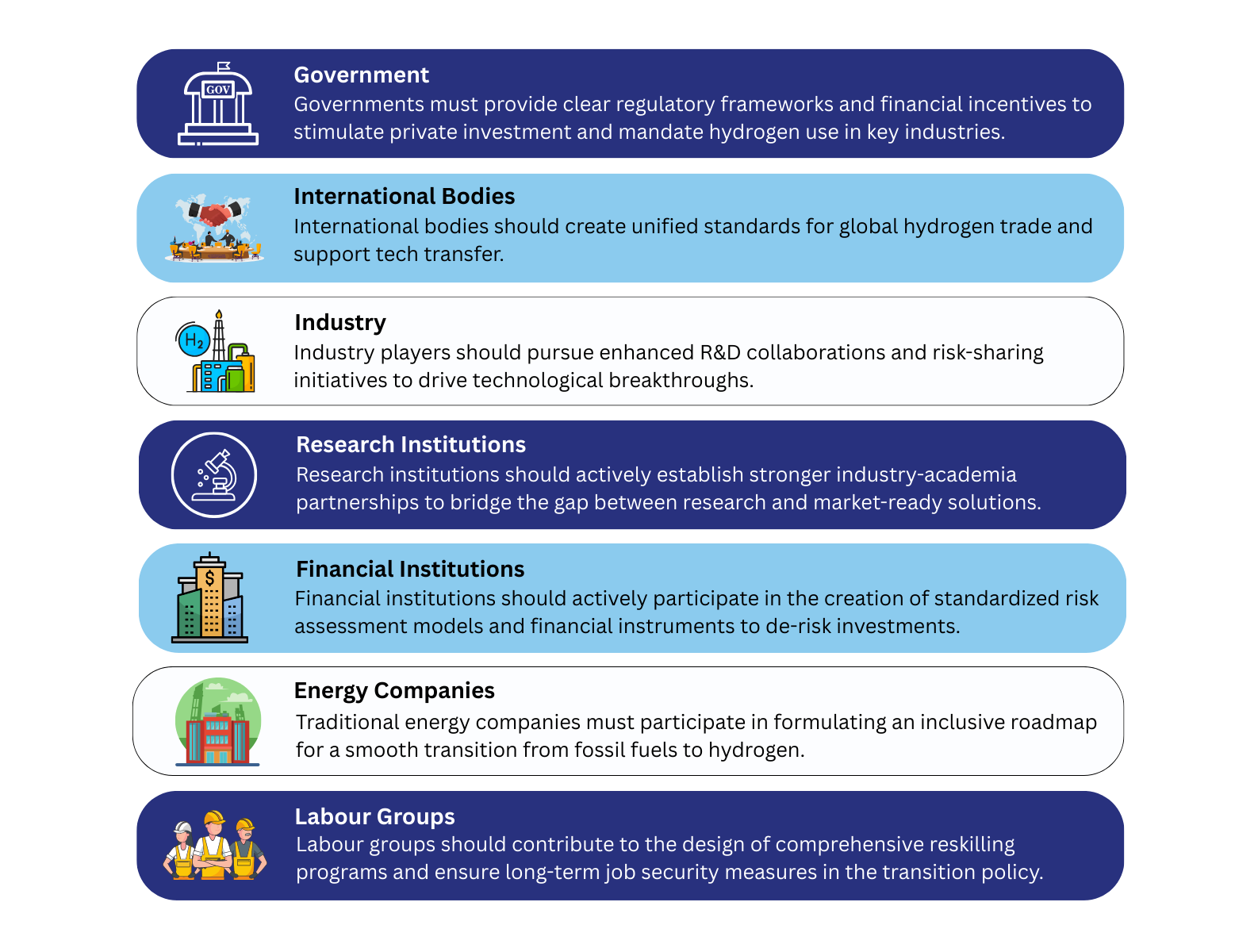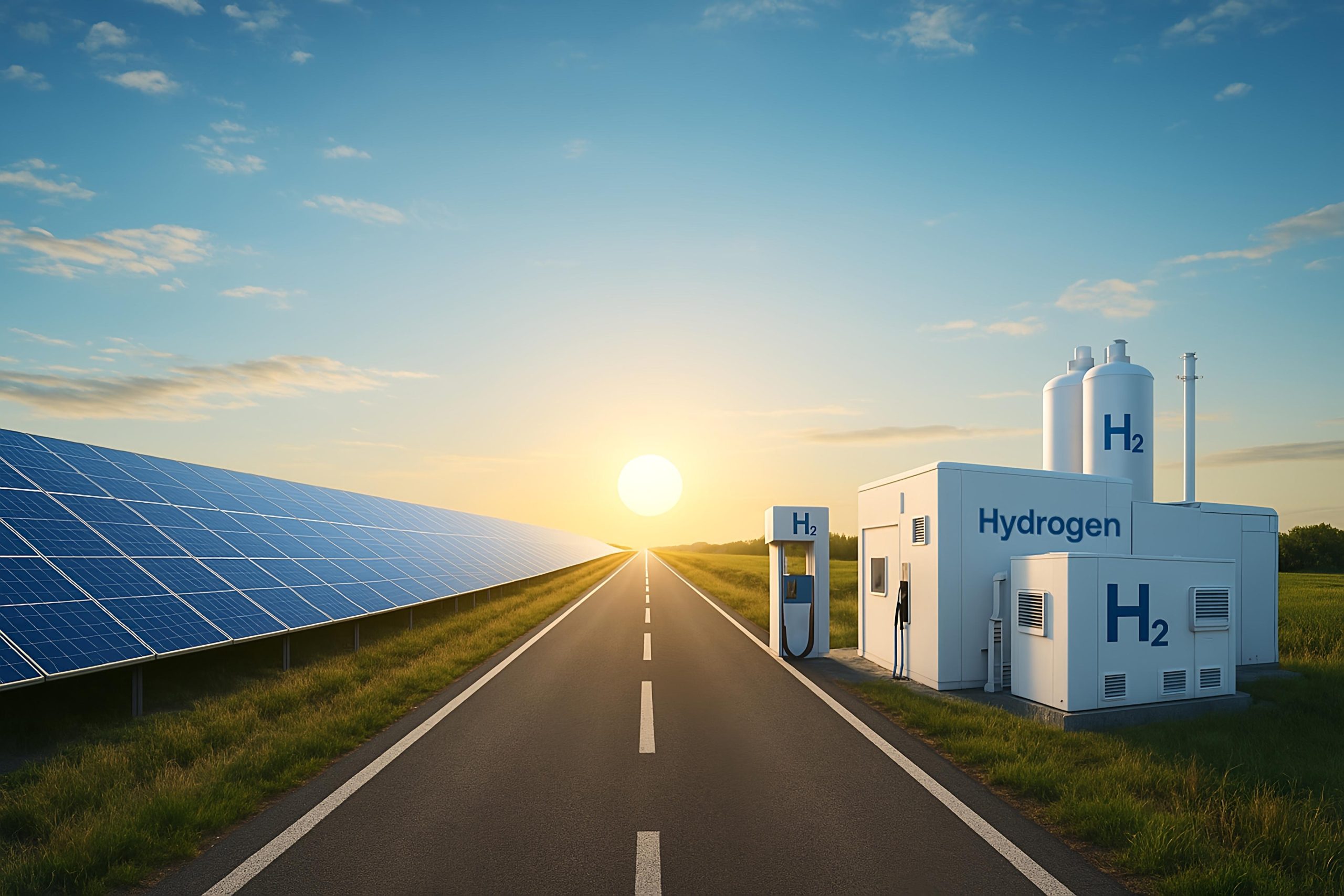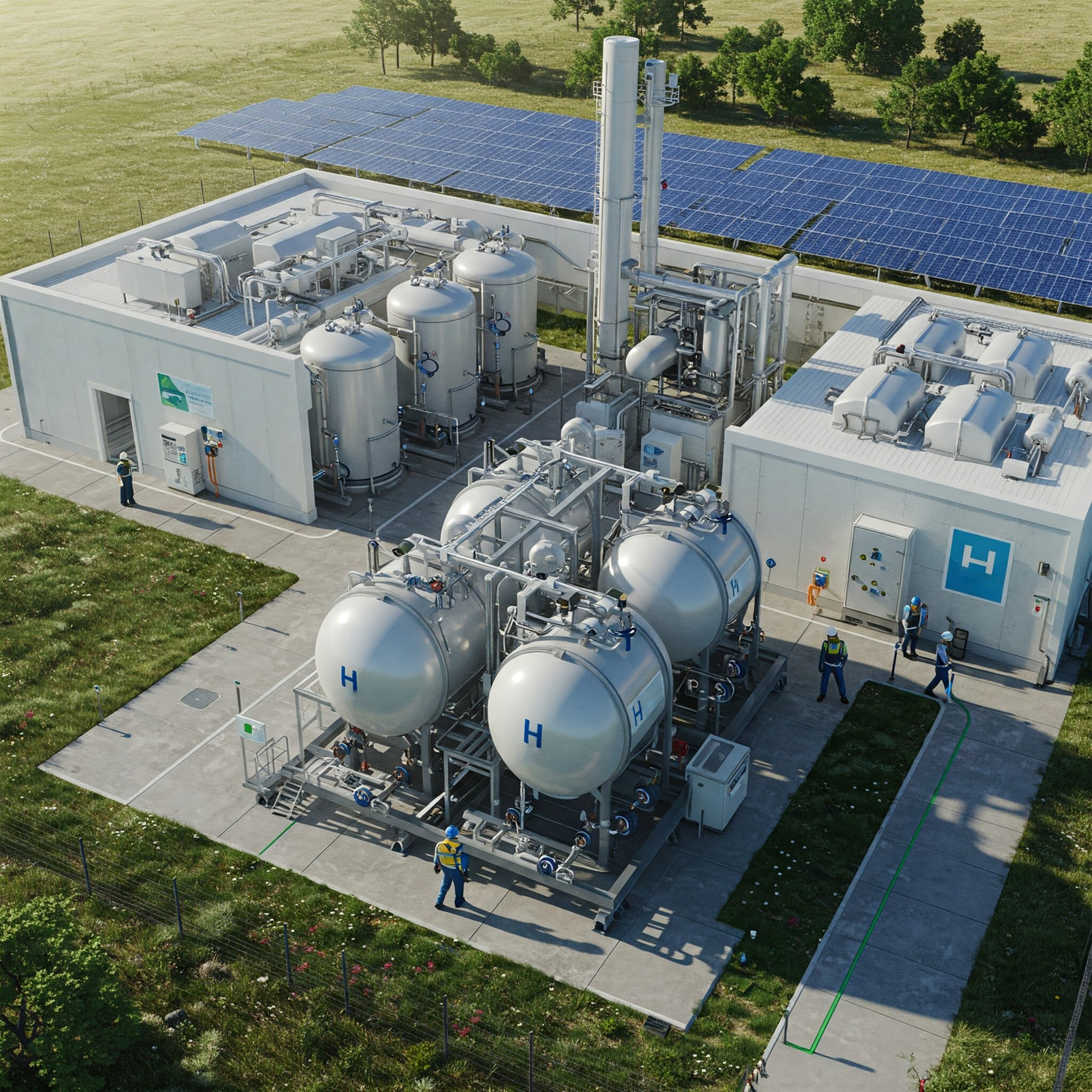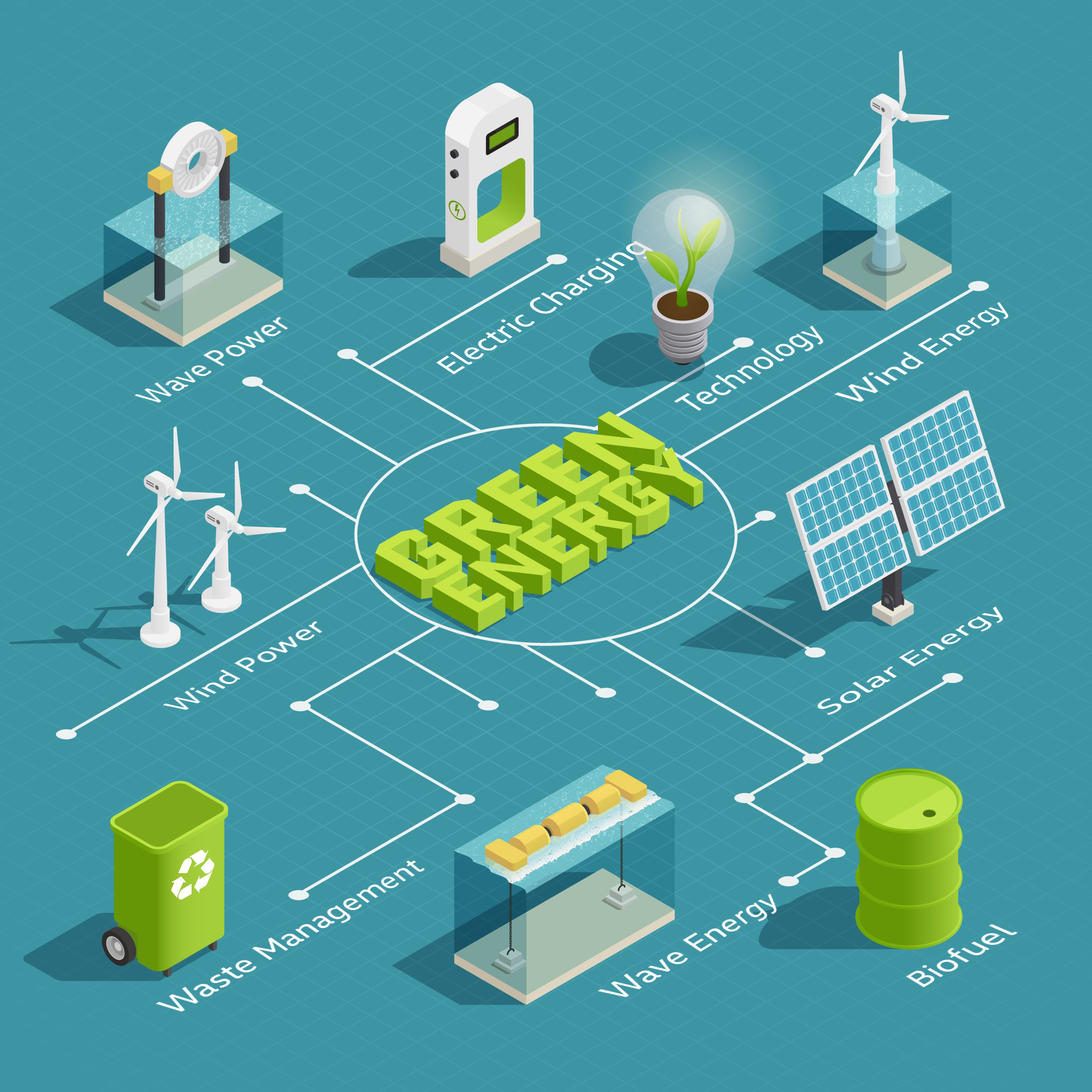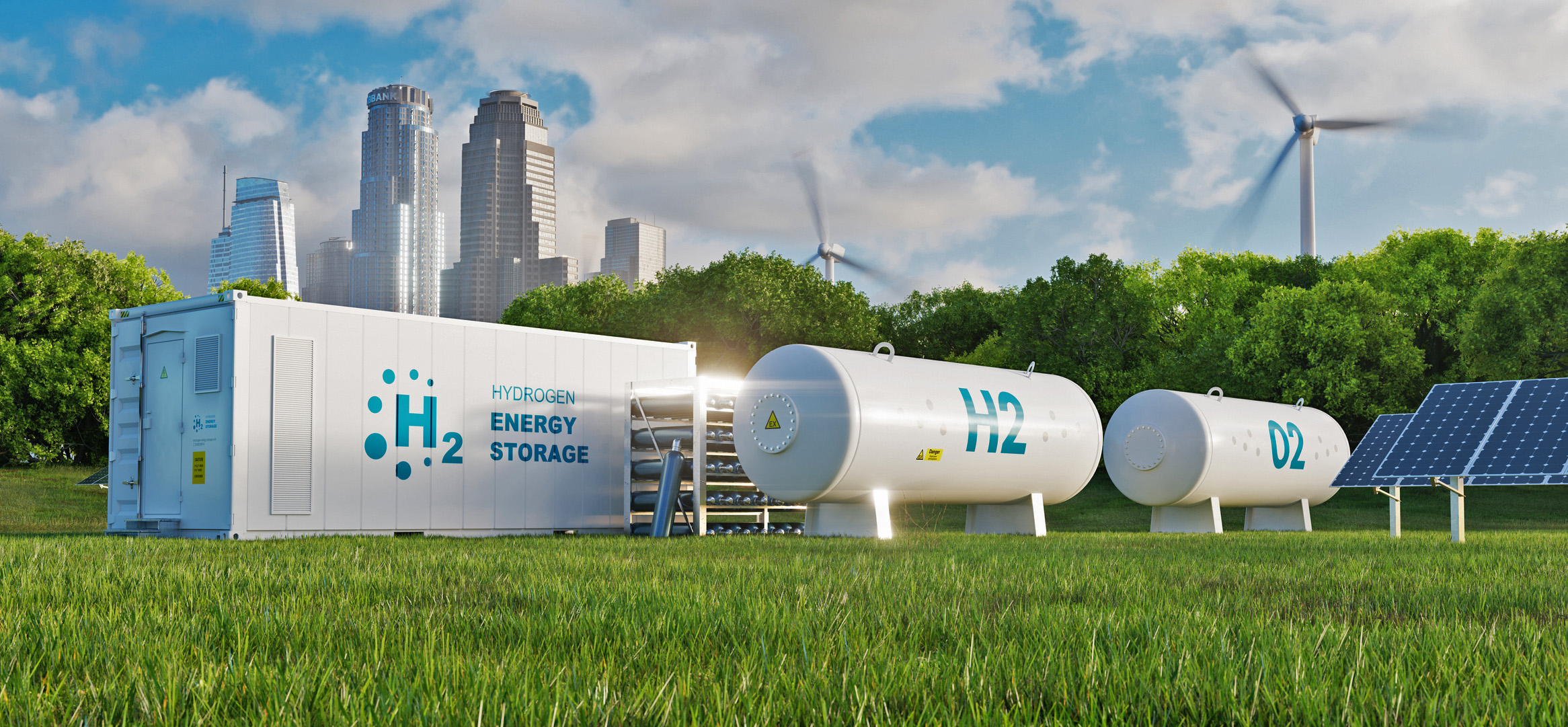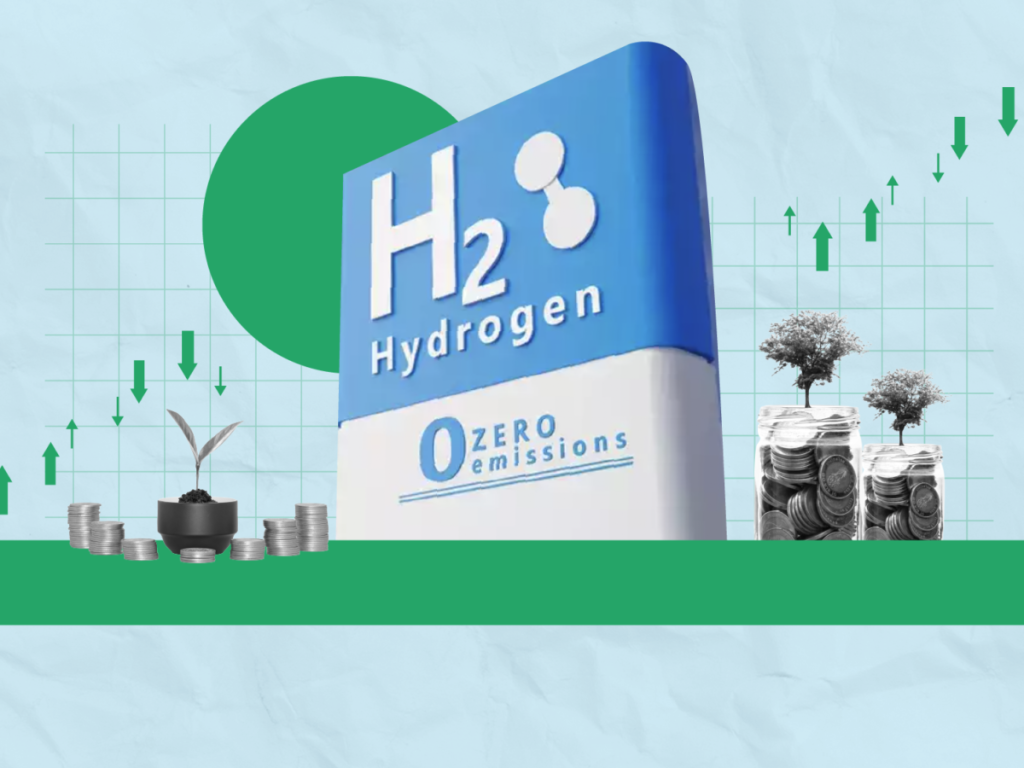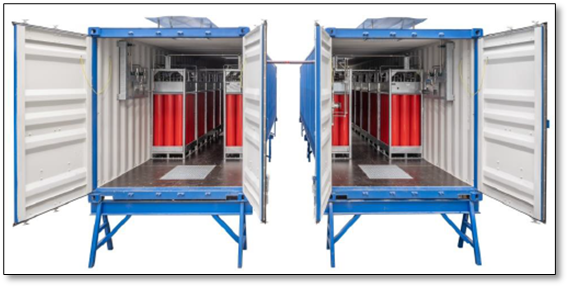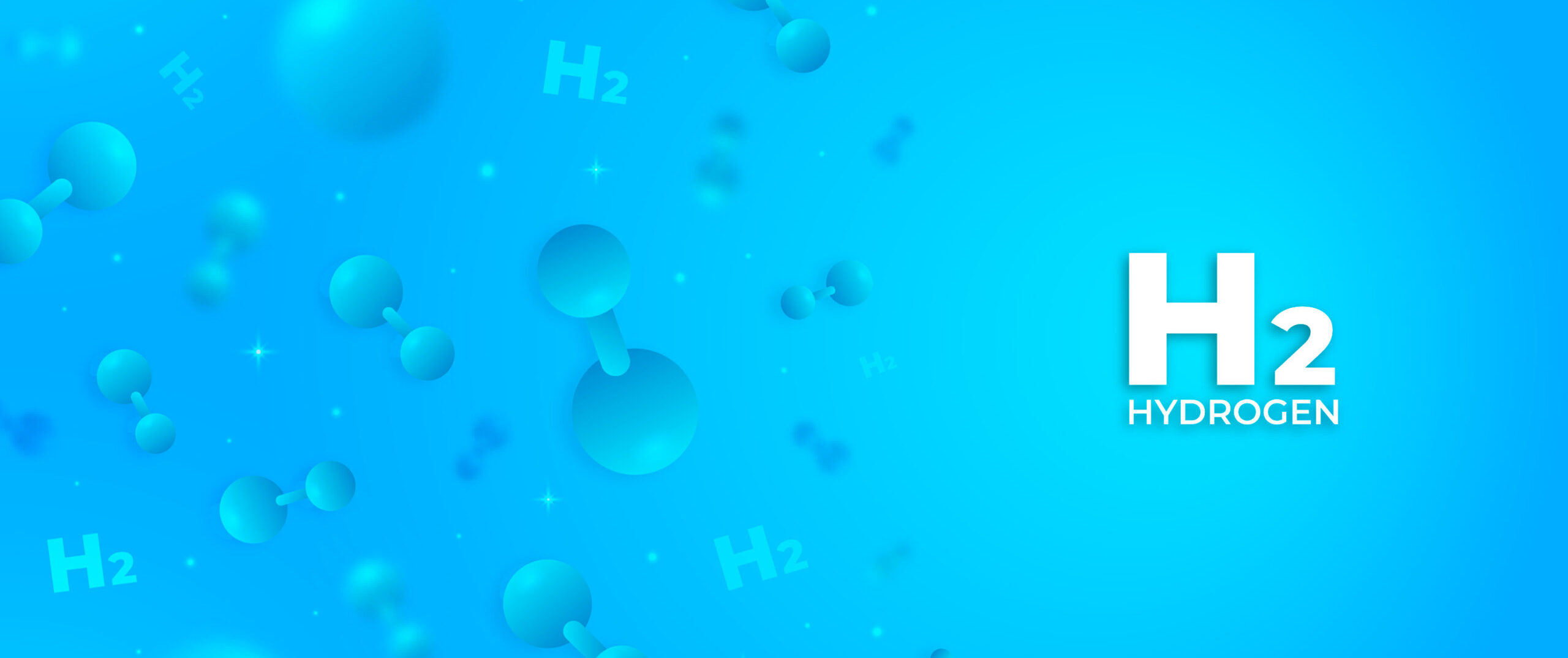The global energy landscape is undergoing a rapid transformation as countries and industries work to transition from fossil fuels to cleaner, more sustainable energy sources. Among these, green hydrogen (or renewable hydrogen) stands out as a versatile, low-carbon fuel that could revolutionise transportation, manufacturing, and power generation. However, building a robust green hydrogen economy isn’t simply about technological breakthroughs—it also requires the coordinated effort of a diverse network of stakeholders, each bringing unique interests and facing distinct challenges.
The drive toward a green hydrogen economy is gathering momentum in India, too, as the nation leverages its vast renewable energy potential and strategic policy initiatives to reduce dependence on fossil fuels. The green hydrogen production in the country is supported by targeted government programs and collaborations with domestic and international partners (Source: Ministry of New and Renewable Energy, Government of India, 2023; IEA India Report, 2022).
Developing a sustainable green hydrogen ecosystem means mapping out the key players and aligning their diverse priorities. In this blog, we explore the interests and challenges of each stakeholder group and discuss strategies that unite them under a unified vision for a green hydrogen economy:
Government – National and Local
Governments are pivotal in laying the foundation for a robust green hydrogen economy. National and local authorities are tasked with creating an enabling environment through policies, incentives, and regulatory frameworks that encourage the development and deployment of hydrogen technologies. Their interests are aligned with reducing carbon emissions, achieving energy independence, and stimulating job creation—all critical components of a modern, sustainable economy (Source: European Commission, 2022; IEA, 2021).
However, the challenges for governments are considerable. The high capital costs of building hydrogen infrastructure, from production facilities to distribution networks, require long-term investments that can strain public finances. Additionally, establishing clear, consistent regulations is essential to attract private sector participation, yet political and economic uncertainties can hinder these efforts. There is also the need to balance short-term economic pressures with long-term environmental goals—a delicate task in rapid change (Source: U.S. Department of Energy, 2023).
To bring government stakeholders together with other players in the hydrogen ecosystem, public-private partnerships (PPPs) and strategic funding initiatives are critical. For instance, the European Union’s “Fit for 55” initiative offers a framework that aligns environmental goals with economic incentives, providing a model for collaboration between national governments, local authorities, and industry (Source: European Commission, 2022 ).
In India, national and state governments actively support green hydrogen production through initiatives such as the National Hydrogen Mission and independent hydrogen missions rolled out by several states. This effort seeks to integrate hydrogen into the country’s broader renewable energy strategy by establishing favourable policies, funding schemes, and local pilot projects to reduce carbon emissions and promote economic growth. Regional bodies like Gujarat and Tamil Nadu are already exploring partnerships to set up production units and infrastructure, aligning with long-term sustainable development goals (Source: Government of India, 2023; Ministry of New and Renewable Energy, Government of India, 2022).
Key expectations:
Government stakeholders must establish clear, long-term regulatory frameworks and dedicated funding channels to drive private investments (Source: IEA Policies).
A key action to drive private investment is establishing a promising market for green hydrogen. This can be achieved with green hydrogen purchase obligations and blending mandates in key industries like refineries, fertilizers, and steel. This approach creates a predictable investment climate, encouraging substantial capital inflows into hydrogen infrastructure.
At the same time, robust public-private partnerships can effectively leverage resources for infrastructure development and sustainable job creation, as recommended by the European Commission’s Energy Transition guidelines (Source: European Commission – Energy Transition).
International Bodies and Climate Associations
International organizations and climate associations are at the forefront of coordinating global efforts to advance a green hydrogen economy. Bodies such as the International Energy Agency (IEA), the United Nations Framework Convention on Climate Change (UNFCCC), and the Hydrogen Council bring together nations, industry leaders, and experts to foster knowledge sharing, develop common standards, and promote large-scale investments in clean energy technologies (Source: IEA, 2021).
These organizations have a strong interest in achieving net-zero emissions on a global scale. They work to create international agreements and standards that ensure the safe production, storage, and transportation of hydrogen. However, aligning diverse national interests and economic conditions remains a significant challenge. The lack of a unified global policy framework can lead to inconsistencies in regulations, making cross-border trade and collaboration more difficult (Source: UNFCCC, 2021).
One effective strategy is the establishment of international partnerships and cooperative projects that prioritize shared technology development and mutual regulatory alignment. For example, the Clean Hydrogen Mission under Mission Innovation exemplifies how coordinated efforts can drive down costs and accelerate the adoption of hydrogen technologies globally (Source: Mission Innovation, 2022).
In recent years, India has successfully positioned itself on the international stage by actively participating in global climate dialogues and hydrogen initiatives. By collaborating with organizations such as the IEA and Mission Innovation, India is working to harmonize its hydrogen standards with global best practices and to attract international investment and technology transfer. This engagement boosts domestic capabilities and reinforces India’s commitment to global net-zero goals (Source: UNFCCC, 2021; Ministry of External Affairs, Government of India, 2023).
Key expectations:
International bodies should develop and implement a unified global regulatory framework to facilitate cross-border hydrogen trade (Source: UNFCCC), and they must enhance international collaborations to support technology transfer and joint investments in hydrogen infrastructure (Source: IEA Global Hydrogen Review). Together, these measures help align diverse national policies and foster consistent standards, paving the way for a resilient global hydrogen economy.
Industry
The private industry is a major driver of the hydrogen economy. Companies spanning automotive manufacturing, energy production, and infrastructure development are investing in hydrogen as fuel and chemical feedstock. The industry’s interests lie in tapping into new market opportunities, enhancing operational efficiencies, and meeting stringent sustainability targets that increasingly influence investor and consumer behaviour (Source: McKinsey, 2023).
Yet, industry players face significant hurdles. The chief challenges are high production costs, uncertainties regarding future market demand, and the need for advanced technologies. The economic viability of hydrogen projects often depends on long-term policy support and substantial initial investments, both of which can be uncertain in the rapidly evolving energy market (IEA, 2021).
Collaboration between industry and other stakeholders is essential to address these challenges. Joint ventures, research collaborations, and shared risk initiatives can mitigate individual burdens. For example, Australia’s Hydrogen Energy Supply Chain (HESC) project is a model of how industry and government can partner to develop and commercialize hydrogen production and distribution technologies (Source: IEA, 2021; Invest 2023).
In India, the industrial sector is witnessing a surge in interest in hydrogen, with key players from the automotive, energy, and chemical industries exploring green and blue hydrogen projects. Indian companies are forming strategic alliances and pilot projects to develop indigenous technologies and integrate hydrogen into existing energy frameworks. This dynamic shift is bolstered by government incentives and the rising demand for cleaner energy solutions across the country (Source: McKinsey India, 2023; Ministry of New and Renewable Energy, Government of India, 2023).
Key expectations:
Industry participants should demand clear, consistent policy signals and long‑term incentives to reduce market uncertainty (Source: McKinsey – The Hydrogen Economy), and they must also pursue enhanced R&D collaboration and risk‑sharing initiatives to drive technological breakthroughs (Source: IEA Insights). Together, these steps will mitigate financial risks and accelerate innovation in hydrogen technologies.
R&D and Educational Institutes
Research institutions and universities play a crucial role in innovating the technologies needed to advance the hydrogen economy. Their work ranges from fundamental studies on hydrogen production and storage to applied research to integrate hydrogen into existing energy systems. The academic and R&D community is driven by the goal of developing cost-effective, efficient, and scalable hydrogen solutions that can compete with traditional energy sources (Source: Nature Energy, 2022).
One major challenge for these institutions is securing sustained funding for long-term research projects, which are often high-risk but critical for breakthrough innovations. Furthermore, there is often a gap between laboratory research and commercial application—a challenge commonly called the “valley of death” in technology development. Bridging this gap requires stronger collaboration with industry partners, who can provide the resources needed to transition from prototype to market-ready products (Source: U.S. Department of Energy, 2023).
To foster closer integration between academia and industry, strategies include government-backed research grants and industry-sponsored projects. Initiatives such as the U.S. Department of Energy’s Hydrogen Shot aim to reduce the cost of hydrogen production through targeted investments in R&D (Source: U.S. Department of Energy, 2023).
Indian universities and research institutes are rapidly expanding their hydrogen research programs, collaborating with international and local industry experts. Innovative projects are underway in premier institutions such as the Indian Institutes of Technology (IITs) and the Council of Scientific and Industrial Research (CSIR), focusing on developing breakthrough technologies in hydrogen production, storage, and fuel cell applications. Enhanced funding from government bodies is further bridging the gap between laboratory discoveries and commercial implementations (Source: CSIR, India, 2022; Ministry of Science and Technology, Government of India, 2022).
Key expectations:
Academic and research institutions should request increased funding and dedicated research grants to accelerate breakthrough innovations in hydrogen technology (Source: Nature Energy) while also actively establishing stronger industry-academia partnerships to bridge the gap between research and market‑ready solutions (Source: U.S. DOE Hydrogen Research). Such measures are vital for overcoming the commercialization challenges faced in hydrogen R&D.
Financial Institutions
Financial institutions, including banks, venture capital firms, and investment funds, are essential for the large-scale financing of hydrogen projects. Their interest lies in the promise of long-term returns from sustainable investments, the diversification of portfolios, and the opportunity to be at the forefront of an emerging market. As the hydrogen economy grows, these institutions increasingly seek to finance projects that align with environmental, social, and governance (ESG) criteria (Source: Goldman Sachs, 2023).
However, the financial sector faces significant challenges in this area. High capital expenditures, uncertain market returns, and the absence of standardized risk assessment models for hydrogen investments create barriers to large-scale funding. Additionally, the volatility inherent in emerging technologies can make investors wary without clear policy frameworks and market signals (Source: European Investment Bank, 2022).
To address these challenges, governments and international bodies can play a pivotal role by offering financial instruments such as loan guarantees, subsidies, and dedicated green bonds. The European Investment Bank’s Green Hydrogen Fund is one such example, providing much-needed capital to startups and infrastructure projects in the hydrogen sector (Source: European Investment Bank, 2022).
In India, financial institutions are beginning to recognize the vast potential of hydrogen investments as part of the nation’s green finance movement. Major banks and venture capital firms are increasingly allocating funds to hydrogen projects, spurred by government-backed incentives and a growing emphasis on ESG investments. This financial backing is critical in mitigating the risks associated with emerging hydrogen technologies and catalyzing market expansion (Source: State Bank of India; Reserve Bank of India).
Key expectations:
Financial institutions are encouraged to demand the creation of standardized risk assessment models and financial instruments to de‑risk hydrogen investments (Source: European Investment Bank – Green Bonds) while also requesting supportive government policies such as loan guarantees and subsidies to attract long‑term capital (Source: Goldman Sachs – Clean Energy Financing). These measures are critical for securing the financing needed to scale hydrogen projects globally.
Traditional Energy Industry
The traditional energy industry, particularly oil and gas companies, is both a competitor and a potential collaborator in the hydrogen economy. Many established energy companies are exploring ways to transition their operations toward cleaner energy sources, including hydrogen. Their interests are driven by the need to reduce carbon footprints while maintaining profitability and the desire to capture new market opportunities in the evolving energy landscape (Source: BP, 2023; Shell, 2022).
Transitioning to hydrogen presents several challenges for traditional energy players. Converting existing infrastructure to accommodate hydrogen—especially for blue hydrogen production, which involves using natural gas with carbon capture and storage (CCS)—requires significant capital investment and technological adaptation. Moreover, regulatory uncertainties, particularly regarding carbon pricing and environmental standards, can complicate these transition efforts (Source: IEA, 2021).
A collaborative transition strategy is key. Traditional energy companies can partner with governments and research institutions to share the financial and technical burdens of adopting hydrogen technologies. Joint ventures, such as those between BP, Equinor, and other major European players, exemplify how industry leaders work together to develop large-scale green hydrogen projects (Source: BP, 2023).
In India, established energy giants, including state-run corporations, are pivoting towards hydrogen as a critical component of their energy transition strategy. Companies such as Oil and Natural Gas Corporation (ONGC) and Indian Oil Corporation are investing in pilot projects and exploring joint ventures to integrate hydrogen into their energy portfolios. This shift helps reduce carbon emissions and positions these traditional players to remain competitive in a rapidly evolving energy market (Source: ONGC, 2023; Indian Oil Corporation, 2022).
Key expectations:
Traditional energy companies should request regulatory clarity on carbon pricing and transition frameworks to guide necessary infrastructure adaptations (Source: BP Energy Outlook), and they must demand support for transitioning legacy assets to hydrogen‑compatible systems through collaborative public-private projects (Source: Shell – Energy Transition). Such clarity and support are essential for a smooth transition from fossil fuels to hydrogen.
Labour
The transition to a hydrogen economy will profoundly impact the workforce. Engineers, technicians, researchers, and support staff across the energy sector must acquire new skills as the industry evolves. Labour groups are primarily interested in job creation, fair wages, and comprehensive retraining programs to help workers transition from declining fossil fuel industries to emerging hydrogen-related roles.
One of the key challenges for labour is the current lack of established training programs and certifications in hydrogen technologies. As industries shift focus, there is a risk of skill mismatches and job displacement if the workforce is not adequately prepared for the changes ahead. Labour organizations must negotiate with employers and policymakers to ensure workers are not left behind in the race toward a low-carbon economy (Source: European Commission, 2023).
Coordinated efforts among governments, educational institutions, and industry players are essential to address these challenges. Initiatives like the EU’s Hydrogen Academy are designed to upskill workers through specialized training programs and certification courses (European Commission, 2023). By investing in education and continuous professional development, labour can be equipped with the skills necessary to thrive in the new hydrogen economy.
The transition to a hydrogen-powered future in India also underscores the urgent need for skill development and workforce reskilling. Trade unions and industry associations collaborate with academic institutions to create specialized training modules and certification programs tailored to hydrogen technologies. These initiatives aim to ensure that workers from traditional energy sectors can seamlessly transition into emerging roles, safeguarding employment and fostering economic resilience (Source: Ministry of Labour, Government of India, 2023; Confederation of Indian Industry, 2022).
Key expectations:
Labour organizations must demand comprehensive retraining programs and robust job security measures to support the workforce during this transition (Source: ILO – Future of Work), and they should request stronger collaboration between government, industry, and academia to develop specialized training and certification programs for emerging hydrogen technologies (Source: ILO Skills for a Greener Future). These steps ensure that the workforce is well‑equipped for the new energy landscape.
Conclusion
The journey toward a fully developed hydrogen economy is complex and multifaceted, involving various stakeholders with distinct interests and challenges. Whether it’s the forward-thinking policies of Western governments or India’s ambitious National Hydrogen Mission, both are paving the way for a sustainable future. National and local governments across the globe—including those in Europe, the United States, and India—are tasked with creating enabling environments through innovative policy frameworks and strategic public-private partnerships. International bodies work to establish unified standards and facilitate cross-border cooperation, while industry players—from established energy giants in the West to emerging innovators in India—invest in advanced technologies to overcome market uncertainties. In parallel, research institutions bridge the gap between laboratory breakthroughs and commercial viability, financial institutions provide the necessary capital, traditional energy companies navigate a challenging transition, and labour forces seek to secure their future in this emerging field.
The hydrogen economy can transform from a promising concept into a tangible solution for global energy challenges by aligning interests through well-designed funding mechanisms, strategic partnerships, and comprehensive skill development initiatives. Coordinated efforts that integrate the robust frameworks of Western markets with India’s dynamic and rapidly evolving energy landscape underscore a universal commitment to reducing carbon emissions and achieving energy independence. As both regions leverage their unique strengths, this synergy not only accelerates technological advancement and infrastructure development but also fosters an inclusive, low-carbon future that benefits all stakeholders (Source: IEA, 2021; Mission Innovation, 2022; Ministry of New and Renewable Energy, Government of India, 2023; IEA India Report, 2022).
The path forward is undoubtedly challenging, but hydrogen can emerge as a cornerstone of the new energy landscape with the right mix of policy support, technological innovation, and stakeholder engagement. As nations and industries rally around this shared vision, establishing a global hydrogen economy will drive economic growth, environmental sustainability, and social progress.

